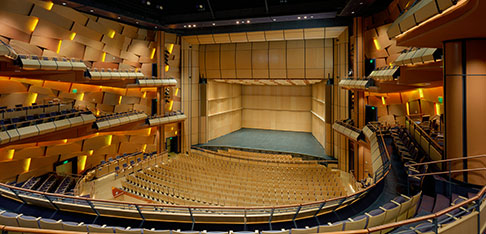
Full Calendar Broadway Classical Concerts Dance Jazz
National Geographic Speakers Theater/Comedy Summer Series Performing Live Programs
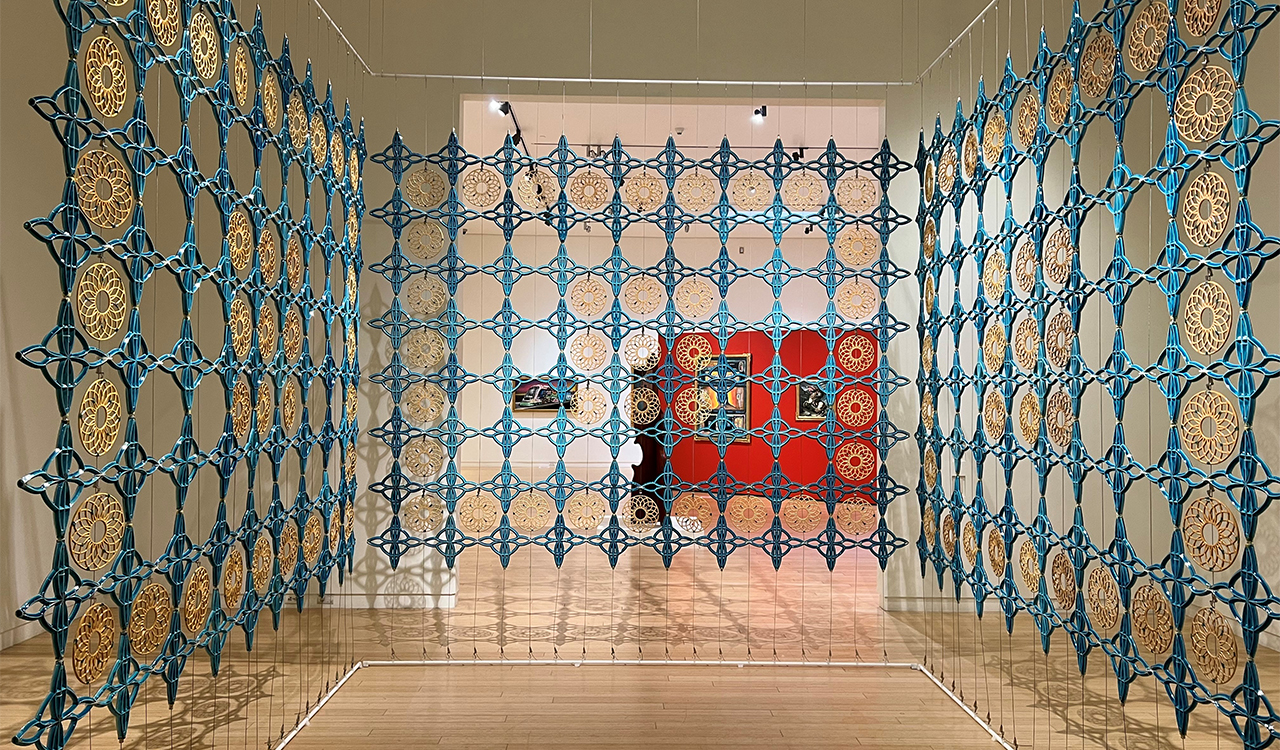
The summer 2022 exhibition at Mesa Contemporary Arts Museum explores a variety of textiles, patterns, social topics and cultural influences through its solo exhibitions and individual pieces of artwork.
Get to know three of the artist featured in the current exhibition.
Laura Tanner – Choice Cuts

Local Tucson artist Laura Tanner grew up in Atlanta, Georgia. Her entire family is still there but Tanner moved to Tucson about five years ago. She is an assistant professor in studio art at the University of Arizona. Yeah.
“I think my interest in becoming an artist happened organically. I always felt very creative. I liked making things with my hands. I had a great teacher in high school that I got to kind of watch his work develop alongside all the students. So that kind of led me to the studio art route,” said Laura Tanner, artist and solo exhibitor at Mesa Contemporary Arts Museum.
Tanner considers herself a drawing-based artist.
“I do ink drawings on mylar which is a sort of plastic, paper, like surface. I do my drawings and ink but then there's another facet of the practice that involves a lot of hand cutting of patterns, lace patterns so that it mimics sort of a tapestry-like aesthetic,” said Tanner.
Her exhibition at Mesa Contemporary Arts Museum is entitled Choice Cuts.
“It came from a trip to the Atlanta History Center where I was looking through their archives of the Women's League there and I was looking for works about narrative textiles. And as I was digging through the archives, I was finding a lot of informal kinds of documentation from junior league cookbooks, or just minutes from their meetings and all of this happened around meals. So, I got interested in that informal space and started looking into domestic practice as a means of social change and progress. A lot of the works in the exhibition, focus on food preparation, foodways and food traditions as a means of political change,” said Tanner.
Her favorite piece in the exhibition is of two women that are in the center of a doily that is shooting into a doily target.
“The reason that's my favorite piece is that I found that image of someone's relative that is it isn't just kind of stuck in some of the archives that I was looking at and it just felt very familiar and indicative of my childhood and how I saw women in positions of power,” said Tanner.
What does Tanner hope people will walk away with after viewing her exhibition?
“I think I hope that people will think about the power of our domestic spaces and the informal kind of meetings and attempts at changing our social constructs in those spaces. And how it doesn't always have to be a protest but it can happen in informal ways and inside your own space because women and people of color have always been at the center of social progress,” said Tanner.
Eliza Au, Sanctuary
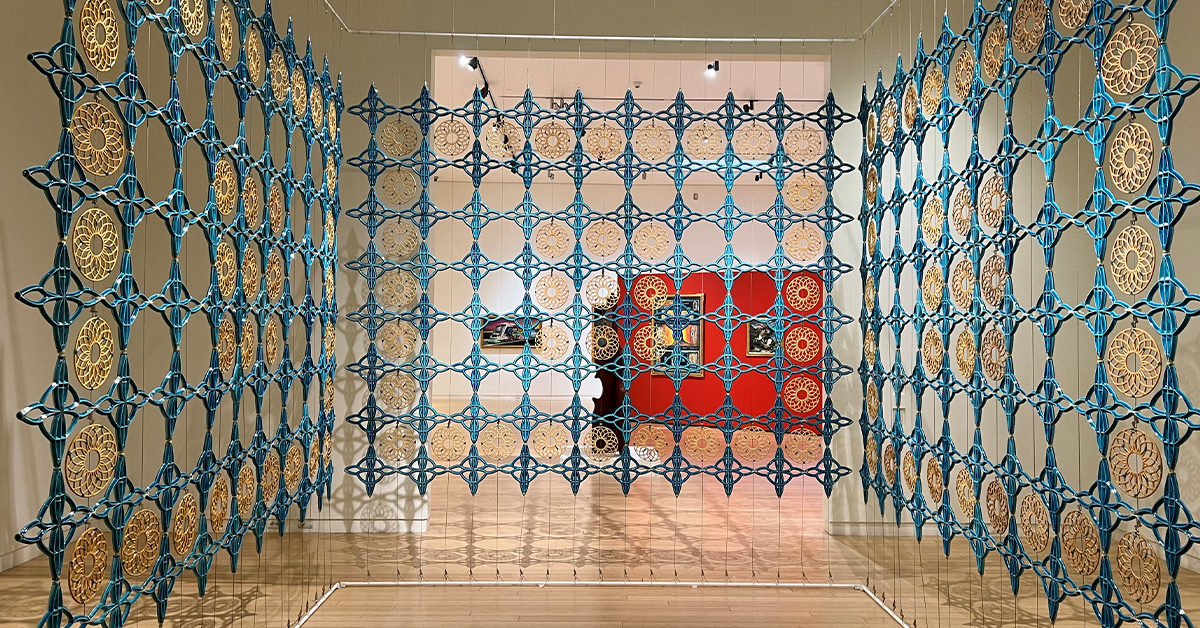
Texas artist Eliza Au is a ceramics artist who uses molds to create her works which are based on lattice forms and sacred architecture. She received her undergrad from the Nova Scotia College of Art and Design and her graduate degree is from Alfred University in Western New York. Au is currently at the University of North Texas.
“I've been always inspired by Islamic architecture and other sacred spaces like cathedrals. I knew I wanted to become an artist when I knew I was interested in patterns and multiples and structure in architecture. So, I look at those patterns and ceramics just seemed the best way to translate them according to what I wanted to make, and then also my own personality,” said Eliza Au, ceramics artist and solos exhibitor at Mesa Contemporary Arts Museum.
Her exhibition is entitled Sanctuary.
“It is a freestanding hanging piece and consists of two different pieces, one that is kind of like a Blue Cross and the other one is kind of like a yellow circle. It is hung in a staple shape that the viewer can walk into and have an experience. I wanted to create a kind of emotional and spiritual experience. The patterns relate to the idea that humans need for solitude or solace,” said Au.
Her inspiration for this piece was actually the space in which the piece would be displayed. Where did the inspiration come from to create it specifically? That way, and that space,
“The space is a certain size and obviously, I was going to make a piece that was related to my own work and it had to do also with where the entranceway was going to come in. When you walk into it, the door faces the inside of the piece. It's made so you can kind of walk around it, you can walk into it. It's kind of an immersive experience,” said Au.
Her hope is that people take away a sense of peace and solitude, a moment of quietness and a chance to have a moment of reflection.
Monica Aissa Martinez, Nothing in Stasis
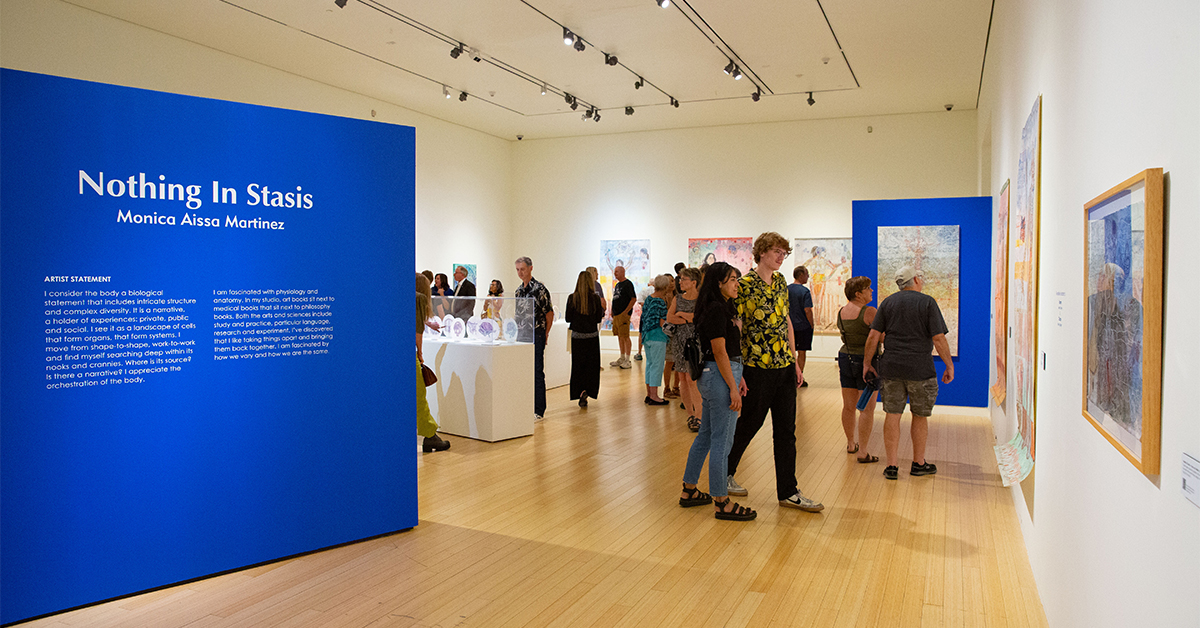
For the last decade, Phoenix-based artist Monica Aissa Martinez has been researching and depicting the intricate structures and complex diversities of living organisms. From humans to microorganisms, Martinez masterfully captures the physical, mental, and spirit of our biological world.
Her exhibition at Mesa Contemporary Arts Museum is entitled Nothing in Stasis.
“You’ll see anatomy, physiology. I look at each piece as a narrative and the body is the story, I’m putting down on paper canvas,” said Monica Aissa Martinez, artist and solo exhibitor at Mesa Contemporary Arts Museum.
“The show is dedicated to my father and my brother who both recently passed away. So, you will be greeted by them when you walk in. Then y around on the walls you'll see people. They are family friends, self-portraits, my husband, neighbors and children. Every single piece in this exhibit has a story, a unique story. I also have I have a piece on obesity and the microbiome, in some of the cases so you'll see viruses, bacteria and fungi, so there's this little area of microscopic imagery. I'm also interested in the brain. So, there's a lot of variety of people ages and then all the stuff that makes us up inside the body,” said Martinez.
Her favorite piece in the collection.
“There's a piece that I made of a young girl who has Down Syndrome, who I knew. It's a long image of her that is eight feet of paper. And I had a lot of fun doing the portrait, learning about down syndrome and then just getting to know Sophie, her mom and her family. So that has that holds a good memory. It's a turning point because I really had to focus on learning so much, it taught me a lot about hope,” said Martinez.
Martinez wants people to relate to the images she has drawn and painted with hopes they will see how much our internal affects our external.
“I want them to see the organs and have that visceral connection. But then I want people to start asking questions. Why is this there? Why is that there? There are QR codes that go with every single piece so you can take your cell phone and go over the QR code and it takes you to the blog post. That post explains the work but also gives you the research behind it, the medical facts and so on. And it gives you the story of who that person in the artwork is,” said Martinez.

As National Volunteer Week unfolds, we're thrilled to honor Mesa Arts Center's remarkable volunteers. They are the heartbeat of
Read More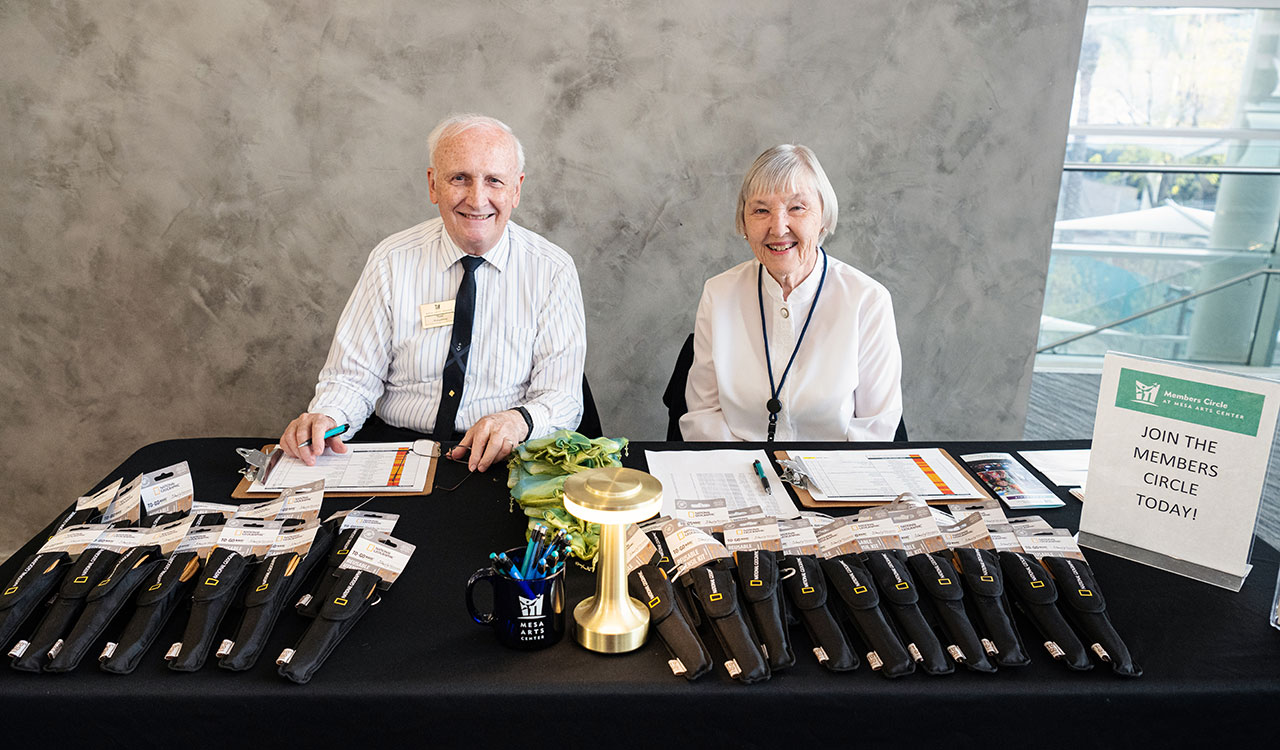
It's National Volunteer Week! In celebration, we want to recognize the incredible impact that our volunteers have on Mesa Arts
Read More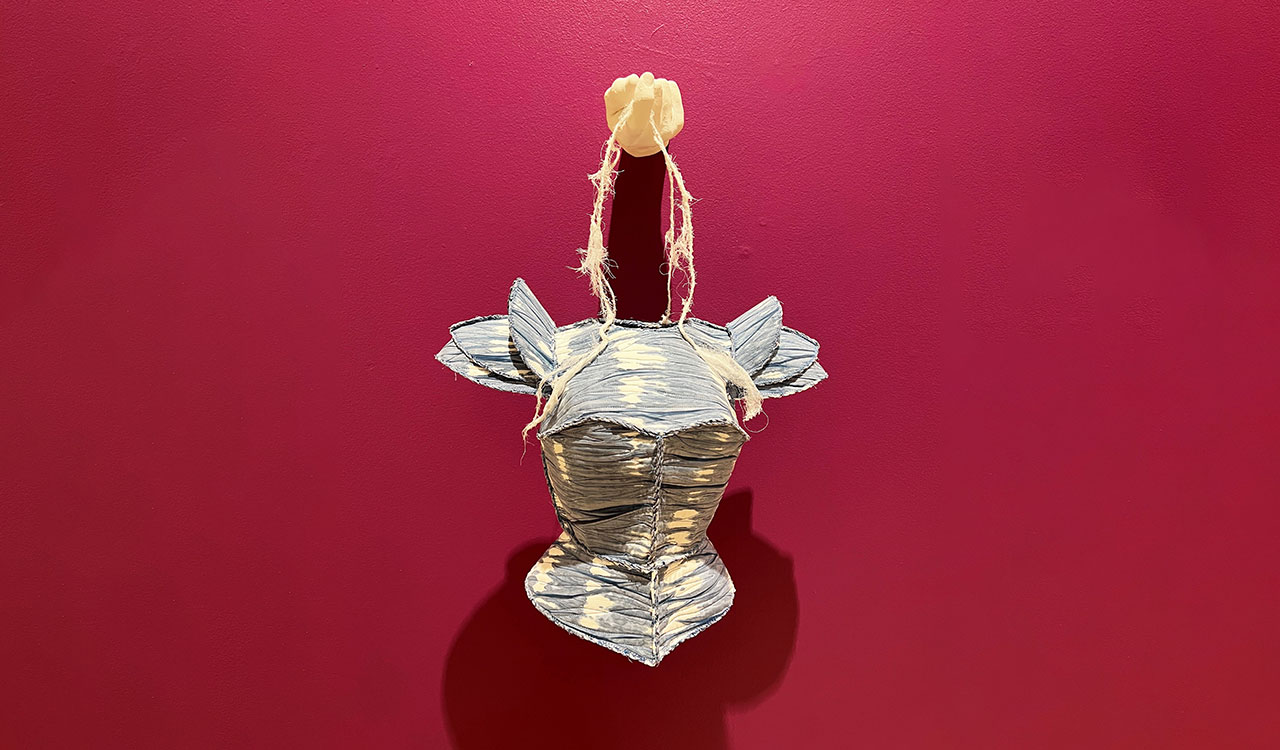
Image credit: Susan Allred, “How Does Your Armor Grow?,” 2022, fiber, mixed media, 25 x 19 x 13
Read MoreImage credit: 44th Annual Contemporary Crafts Exhibition opening reception on Feb. 10, 2023 at Mesa Contemporary Arts Museum.
Read More